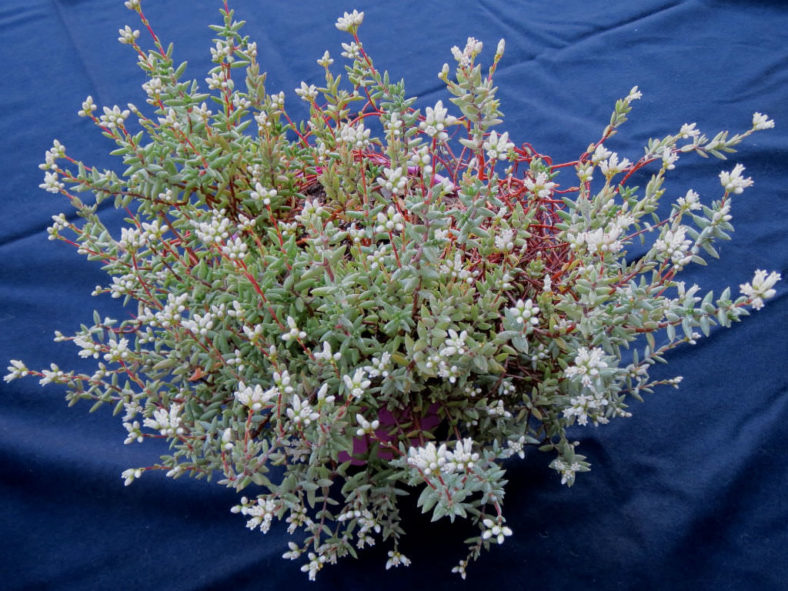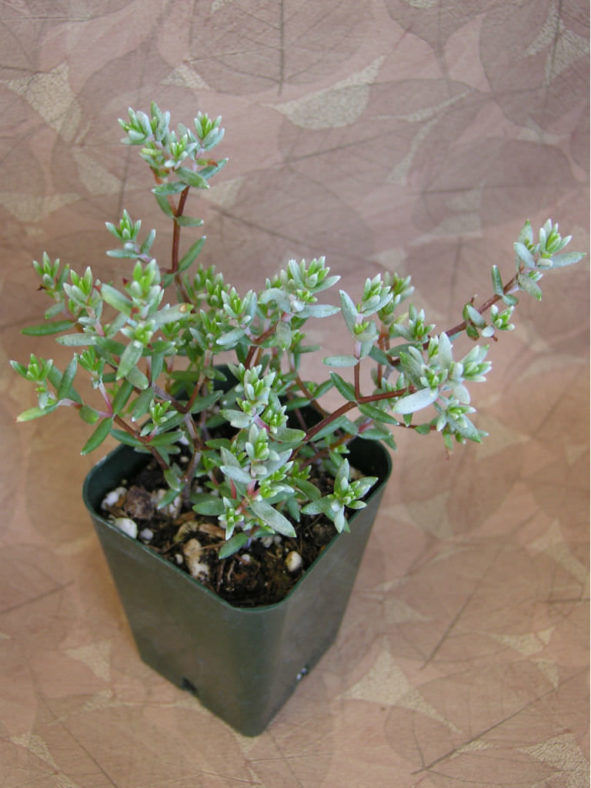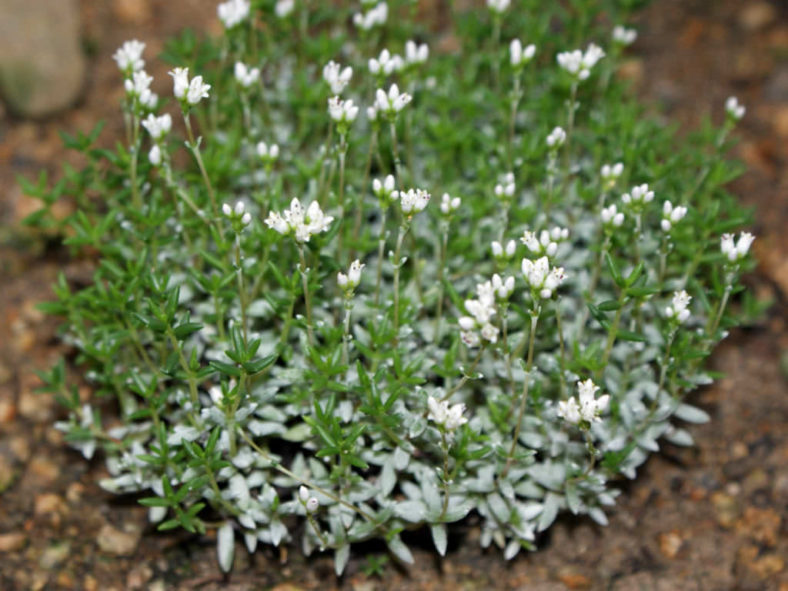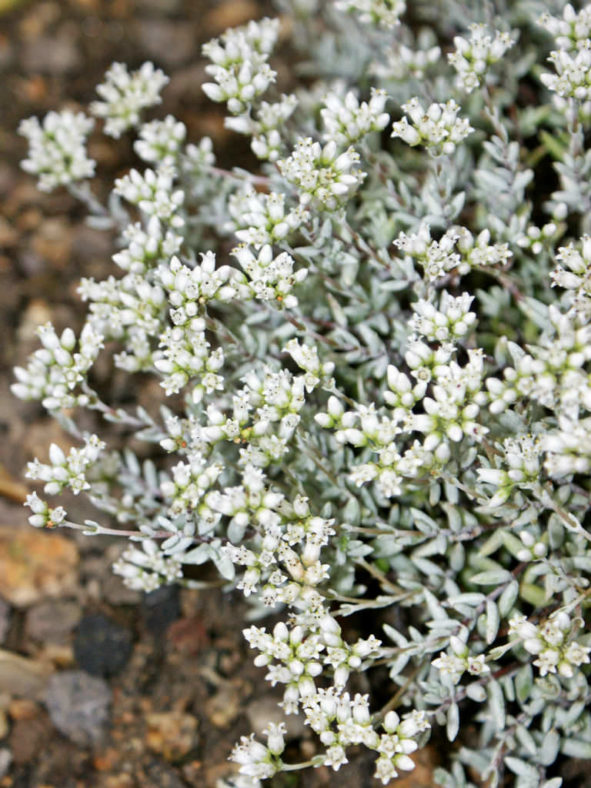Scientific Name
Crassula biplanata Haw.
Synonym(s)
Crassula fruticulosa, Crassula kuhnii, Crassula punctulata, Creusa biplanata, Creusa biplanata var. punctulata
Scientific Classification
Family: Crassulaceae
Subfamily: Crassuloideae
Genus: Crassula
Etymology
The specific epithet "biplanata" (pronounced by-plan-AY-tuh) means "with both faces flat" and refers to the flat surfaces of the leaves.
Origin
Crassula biplanata is native to South Africa (Cape Provinces).
Description
Crassula biplanata is a small succulent with a somewhat swollen main stem and thick, green to reddish-green, erect or decumbent branches covered with short papillae. It can grow up to 1 foot (30 cm) tall. The older branches are smooth, with brown bark and sometimes with aerial roots. The leaves are thick, fleshy, lance-shaped, and can reach a length of up to 0.6 inches (1.5 cm). They are green and often covered with white bloom.
The flowers are tubular, white to creamy-white, and appear in dense, flat-topped clusters from mid to late summer.
Because its leaves are covered with a white bloom, Crassula biplanata is often wrongly labeled as Crassula pruinosa.

How to Grow and Care Crassula biplanata
Light: Crassula plants prefer full sun to partial shade. However, intense afternoon sun in the hottest summer can burn the leaves of the plants. Most Crassulas can be grown indoors if given enough light.
Soil: They are not particular about soil pH, but Crassulas require very porous soil with excellent drainage.
Hardiness: Crassula biplanata can withstand temperatures as low as 30 to 50 °F (-1.1 to 10 °C), USDA hardiness zones 10a to 11b.
Watering: These plants have typical watering needs for succulents. Avoid overwatering using the "soak and dry" method, where the soil is soaked with water, slowly drained, and left to dry out before watering again. Reduce watering in winter.
Fertilizing: Crassulas will benefit from a small amount of organic fertilizer in mid-spring when they start actively growing.
Repotting: Repot as needed, preferably in spring, at the beginning of the growing season.
Propagation: Crassulas are generally started by leaves or stem cuttings. They can also be grown from seeds and offsets.
Learn more at How to Grow and Care for Crassula.
Toxicity of Crassula biplanata
Crassula plants are generally nontoxic to people and pets.
Links
- Back to genus Crassula
- Succupedia: Browse succulents by Scientific Name, Common Name, Genus, Family, USDA Hardiness Zone, Origin, or cacti by Genus
Photo Gallery
Click on a photo to see a larger version.


